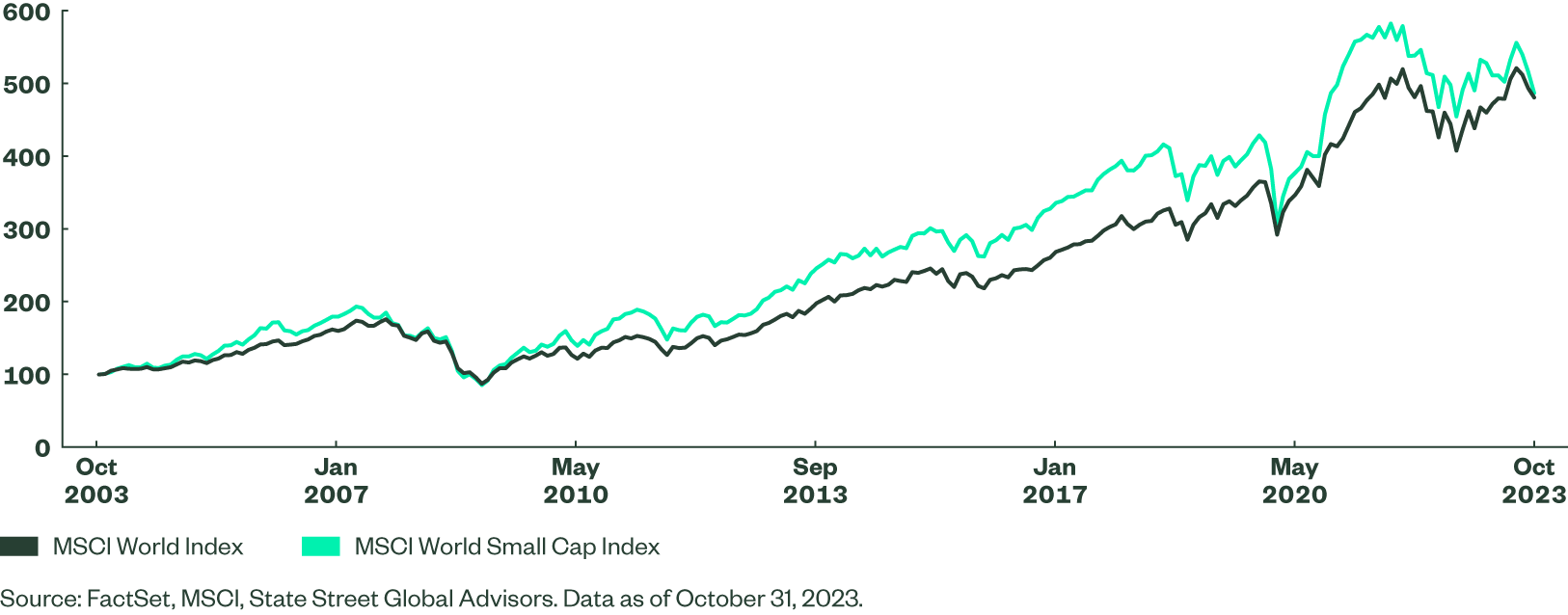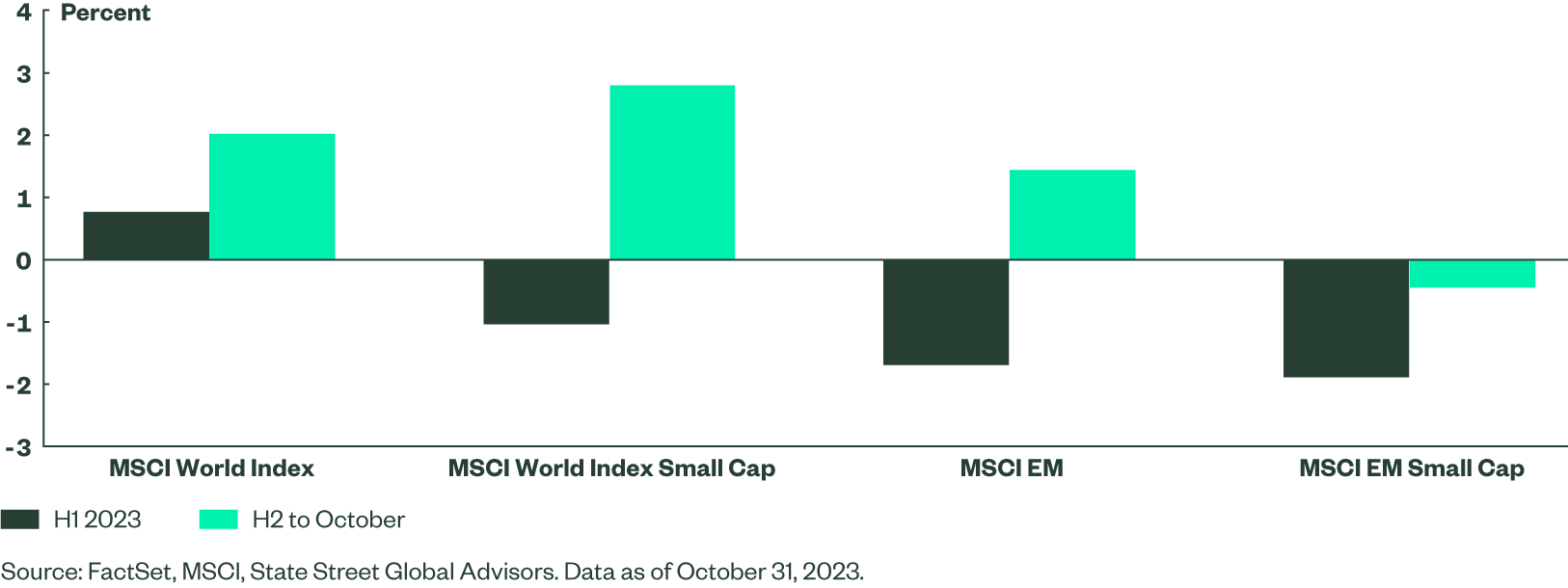Shining a Light on Small Caps
Smaller-capitalization stocks have been out-of-favor this year. Left out of the ‘magnificent seven’ rally in the first half of the year, they have more recently languished amid the risk of the higher-for-longer narrative. But we believe they should not be overlooked and there are opportunities to pick up excellent companies at bargain prices.
Returns
Conventional wisdom states that small caps underperform in weaker economic environments, and then outperform in the recovery. However, the turning point from weakness to recovery is very difficult to time, and we believe small caps remain an important long-term weapon in an asset allocator’s armory.
Developed market small cap indices have understandably struggled year-to-date, with underperformance accelerating over the past few months as equity markets fell on increasing recession concerns, and the higher-for-longer narrative started to take hold.
Over the long-term, small caps have kept pace with their larger-cap counterparts, but indeed have recently decoupled, as they previously did in the COVID crisis in early 2020 and during the Global Financial Crisis of 2008–09 (Figure 1). In hindsight, those periods were good entry points into small cap segments of the market.
Figure 1: 20-year Cumulative Returns for MSCI World and MSCI World Small Cap Indices

Much of the recent outperformance of large caps, though, can be attributed to the extraordinary returns of US mega-cap names, as typified by the “magnificent seven,”1 whose returns have supported global large cap indices more broadly.
Outside of the exceptionalism of these stocks, returns have been decidedly more average. For instance, the 8.3% year-to-date return of the MSCI World Index slips back to only 1.5% if we exclude the top seven stocks.
Outside of the US, the story is different. In the US market, the small cap end of the spectrum has lagged the large cap indices by 13% year-to-date; in Europe, small caps have lagged large caps by only 8%, and small cap emerging market stocks have outperformed their large cap peers by 12%.
Valuations
Recent weakness in the share prices of the small cap cohort has shined a light on some interesting opportunities. The first is that small cap stocks globally are sitting on considerable valuation discounts to the larger names — both as of today, but also as compared to historical valuations.
Figure 2: 12-Month-Forward Price/Earnings Ratios for MSCI Indices

On average, over the past 20 years developed market small caps have tended to be more expensive than large caps, with those in the MSCI World Small-Cap Index, for example, trading at 16.9 times next year’s earnings compared to 14.8 times for the MSCI World Index.
The current valuation discount across all regions reflects perceived risks and growth expectations, but creates opportunities for small cap outperformance as the environment normalizes. In fact, analyzing 12-month forward earnings growth expectations in the MSCI World and Emerging Markets universes shows the tide may be turning. In the first half of this year, earnings were being downgraded across the small cap spectrum. However, from mid-year, earnings growth expectations in developed markets exceeds that of the larger names, although coming from a much lower base.
Figure 3: Aggregate 12-month Forward Earnings Growth Expectations for MSCI Indices

Breadth and Concentration
We have previously written about the dangers of over-concentration in cap-weighted indices, where the top seven stocks account for 19% of the index weight for the MSCI World Index.2 The small cap end of the spectrum, however, offers a lot more diversification, both in terms of number of names and concentration in those names. The top seven companies in the MSCI World Small Cap Index account for only 1.2% of the market capitalization and there are 4,279 names in the Index, compared to just 1,511 in the World Index.
At a sector level, the contribution to returns in the large caps have been dominated by the mega-cap sectors and names. In small caps the contribution has been more evenly distributed, with the underperformance of Healthcare representing the largest (negative) contribution.
While the larger-cap indices are at the mercy of continuing strong performance in a few names, the breadth in the smaller-cap names offers some level of protection by diversification.
The Bottom Line
We believe smaller-cap stocks should not be overlooked, despite being out of favor this year. Left out in the ‘magnificent seven’ rally in the first half of the year, small cap stocks have more recently languished amidst the risk of the higher-for-longer narrative. But we believe they should not be ignored and there are opportunities to pick up companies of tomorrow at bargain prices.
Whether in broad universes, such as in world or emerging market indices, or more targeted exposures such as in Europe, we believe there are compelling opportunities for skilled active managers to add value in smaller-capitalization stocks, and that the asset class offers diversification benefits over the concentration of the large cap indices.